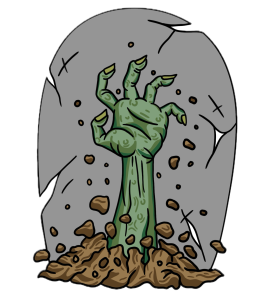OP-ED: RE: campus vandalism
October 24, 2019
Dear President Murray,
We were extremely disheartened by your recent email response to the political intervention upon the Marcus Whitman statue, which took place on Indigenous Peoples’ Day. You admonished the spray painters and lamented the destruction of property, calling instead for dialogue. We feel strongly that the intervention on the Marcus Whitman statue was dialogue, an act of engagement with the statue that sought to remark on the troubling conditions of its display on this campus. We urge you not to dismiss this opening of discourse.
As art historians we believe in and recognize the power of art both internally and externally. Perhaps, by articulating this power, we can further the dialogue started by the spray painters. Art is never neutral or disinterested; it is enmeshed within politics, identity, power and culture. Art has the potential to disrupt hegemonic ideologies, but it can, in equal measure, confirm cultures of oppression. By continuing to display the Marcus Whitman statue in its current state, Whitman College valorizes Marcus Whitman and his colonialist, genocidal history. The Whitmans’ legacy forms the bedrock of this institution; Whitman College is a memorial to the Whitmans in the form of an educational institution. In order to continue the process of reconciling Whitman College’s colonialist history, we, as an institution, need to do more than allow the statue to remain as it is now.
Through archival research we have uncovered the true ownership of the statue to be the city of Walla Walla. We are arguing that Whitman College, as the steward of this statue, has a unique ability and significant obligation to intervene upon the piece. To continue to display the statue in its present, glorifying form is unacceptable, but it is equally unacceptable to simply move it off-campus and proceed to ignore the multitude of ways Whitman actively participates in ongoing histories of genocide, violence, racism and xenophobia. To cede the statue back to the city is equally irresponsible, for the college will no longer have a say in how the statue functions. We, following Professor Lisa Uddin’s proposals for futures of the work, understand that something, and no small something, has to be done, and we hope that you can see that too. We are calling for the removal of the statue from public view, and demanding that the land which the college purchased for the statue’s display be used as a site for reparative action. We ask for a specifically designated arts fund to be allocated for the commissioning of a work that will interrogate colonial histories and, further, celebrate the indigenous lives which the college’s namesake destroyed. We hope to begin a collaborative process with you, President Murray, by which this proposal can be actualized.
We leave you with the full quote from the base of the statue. President Murray, please ask yourself this question: Is this the narrative you want to represent the college?
“For to my mind all my work & plans involved time & distance & required confidence in the stability of God’s government & purpose to give the Heathen to his Son for an inheritance and among them those uttermost parts of the earth for his possession.” — Marcus Whitman
Regretfully,
Women of Art History and Visual Culture Studies Class of 2020






Elyse Semerdjian • Oct 26, 2019 at 2:41 pm
I am very impressed with the thoughtfulness of the op-ed authors’ arguments. As an historian, I am particularly swayed by the use of the archive to offer evidence as to (1) to whom the statue actually belongs versus who is its custodians, and (2) the troubling context of the quotation found at he statue’s base. Our art history students have given us food for thought here as to how we might repair past wrongdoings and consider these recent interventions on the statue as dialogue rather than simple acts of vandalism.